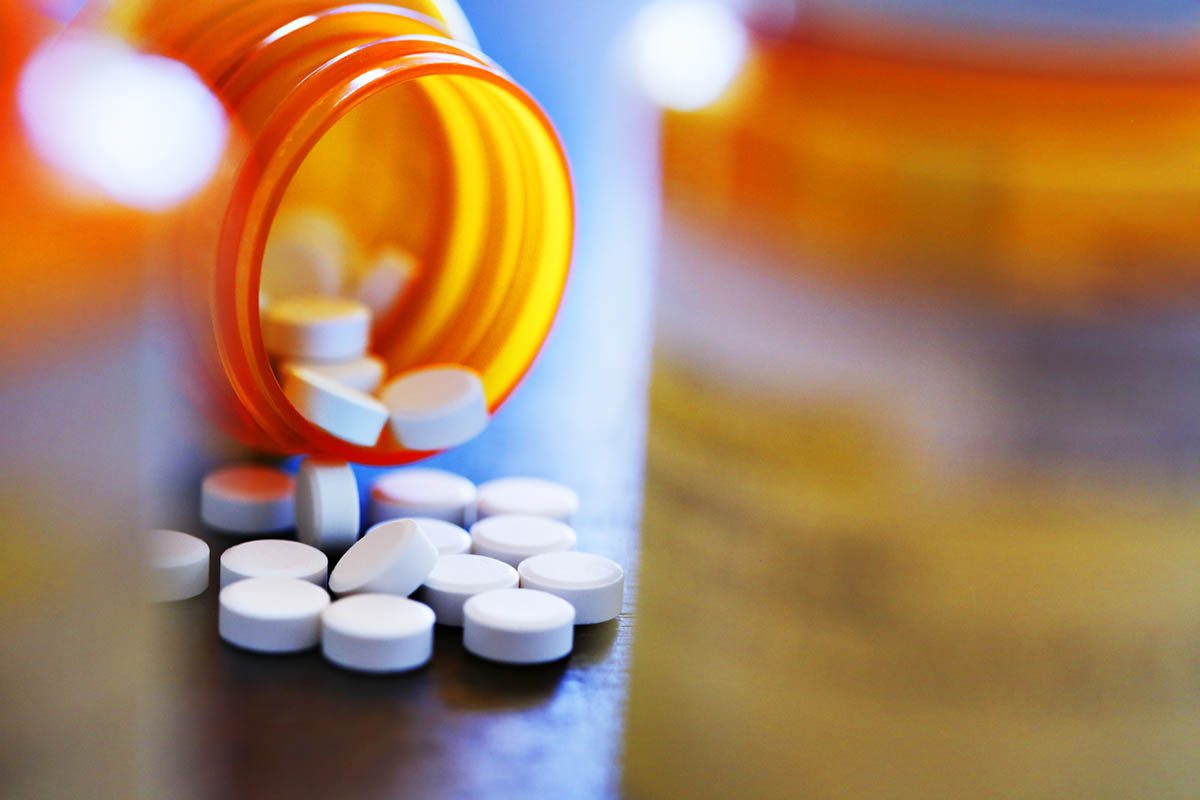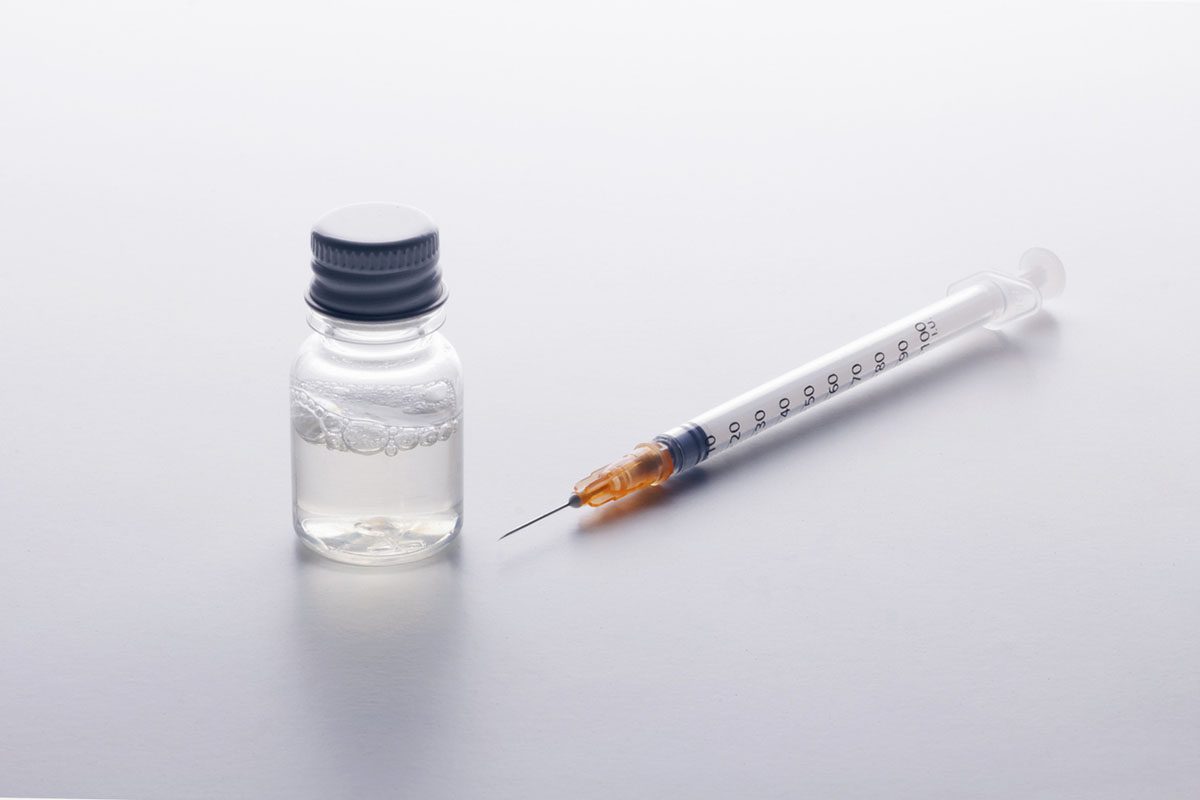Because this piece does not have an abstract, we have provided for your benefit the first 3 sentences of the full text.
To the Editor: According to the DSM-5, bipolar II disorder is a mood disorder characterized by at least 1 hypomanic episode and at least 1 major depressive episode. The patient with hypomania has elevated mood, or irritable mood, present nearly every day for at least 4 consecutive days.
It is not uncommon for these patients to self-medicate with alcohol, and accurate diagnosis of bipolar II disorder is often delayed.
Bipolar II Disorder Masked by Substance Use
To the Editor: According to the DSM-5,1 bipolar II disorder is a mood disorder characterized by at least 1 hypomanic episode and at least 1 major depressive episode. The patient with hypomania has elevated mood, or irritable mood, present nearly every day for at least 4 consecutive days.1
It is not uncommon for these patients to self-medicate with alcohol,2 and accurate diagnosis of bipolar II disorder is often delayed.3 Here we present a case of bipolar II disorder that was undiagnosed for an extended period of time. The patient was self-medicating with alcohol and relapsed every time after discharge until a mood stabilizer was added.
Case report. Mr A is a 25-year-old graduate student who moved from his hometown to a university town to complete graduate school. He was doing well in school. He never used to drink alcohol but gradually started drinking heavily. Prior to his first admission to the hospital, he consumed 1.5 liters of whiskey and 12 beers in 3 days and then presented himself to the emergency room (ER) for detoxification ("detox") with a blood alcohol concentration of 100 mg/dL. He denied any mood symptoms or suicidal or homicidal ideations. He was detoxed with lorazepam starting at 1.5 mg 3 times a day, gradually tapered down to 0.5 mg daily, then lorazepam was discontinued. He tolerated the detox well. Mr A reported no previous psychiatric diagnosis or hospitalizations. There was no family history of psychiatric illnesses, other than that his father abused alcohol occasionally. He reported trouble sleeping. He also reported some depression at the end of detox, but we thought it would be easier to assess this condition on an outpatient basis once he was sober for a period of time.
Mr A was discharged with a DSM-5 diagnosis of substance-induced mood disorder with depressed mood and a prescription for trazodone 100 mg, his only psychiatric medication. After detox, Mr A was provided with resources to follow up at Alcoholics Anonymous (AA) meetings. Although Mr A had followed up with outpatient psychiatry, we saw him in the ER once again 3 months later with a similar presentation.
Mr A’s blood alcohol concentration was 115 mg/dL. He reported that during outpatient follow-up, he was prescribed 150 mg of bupropion extended release for depression. After that initial appointment, however, he did not like how the medication made him feel as it did not address his depression. The bupropion was stopped after 1 week. He was then changed to citalopram that was initially started at 5 mg daily. He was on this dosage for 2 to 3 weeks and then titrated to 10 mg daily with a plan to titrate further to 20 mg and later to 40 mg daily. He thought it helped with his depression. He also took clonazepam on an as-needed basis, 0.5 mg tablet 2 or 3 times a week. He stated that his anxiety improved with clonazepam and citalopram. Gradually, he was tapered off the clonazepam.
Mr A reported that he remained sober for 2 months and then relapsed by drinking 750 mL of whiskey per day at which time he again presented for detox, and his hospital course followed the same pattern as before. He had no withdrawal symptoms during this second admission, and we discharged him on citalopram 40 mg daily. No one in his graduate program was aware that he had been admitted twice now for alcohol detox and depressive symptoms. He continued to follow up on an outpatient basis.
After 6 months, we saw the patient again in the ER. This time he was accompanied by his roommate, who was also a student in the same program. Mr A told us he had recently been diagnosed with leukemia and was feeling suicidal. He had never reported suicidal ideation before. His blood alcohol level was 400 mg/dL, and he continued to deny withdrawal symptoms from alcohol. He reported he had been sober for 1.5 months after his last discharge and then again relapsed. He reported going to the AA meetings. Prior to the ER visit, the Dean of Student Affairs visited him at his apartment because he was concerned that Mr A was not attending classes. The patient reported he was on an oral chemotherapeutic agent, cyclophosphamide, and recently had sporadic attendance at school. He had missed quite a bit of class and was behind in his studies; he stated he was considering a leave of absence or transferring to his hometown to seek treatment for the leukemia and to be nearer to his family. He reported anxiety since he had been in school, and this worry kept him up at night. Mr A told us citalopram was still helping. We asked for a release to speak to his oncologist, but he refused. He did however sign a release for us to speak with his parents and the Dean of Student Affairs.
We noted this was the third presentation in a similar manner in 9 months. He again tolerated the detox well and again was ready to leave in 3 to 4 days. We obtained collateral information from the Dean of Student Affairs at the graduate program and from the parents and friends, who subsequently acknowledged that Mr A was never diagnosed with leukemia. Rather, it was a stepdad who was diagnosed with leukemia. The patient noted that he reported this as he thought it would facilitate his leaving school and returning home. Also, the family reported some anger outbursts and mood swings, which increased our suspicion index for a diagnosis of bipolar disorder. Mr A reported that he was bingeing on alcohol, most likely self-medicating. Thus, upon obtaining all this information, we decided to taper off his citalopram. He was taking 40 mg daily, which we gradually decreased and discontinued and started him on olanzapine 5 mg at bedtime. The patient throughout his stay in the hospital reported that he was feeling well and wanted to leave. However, eventually he decided to remain on a voluntary basis. Gradually, Mr A started sleeping better. He tolerated the medication well. He became more interactive with the staff and started going to group therapy. We also called his mother, and, before discharge, had a family meeting with the mother, the Dean of Student Affairs, and the patient together. We solidified the plans for him to take a leave of absence from school and return to his hometown for further care and follow-up in a chemical dependency rehabilitation program there. We discharged Mr A with a DSM-5 diagnosis of bipolar II disorder. The patient has not come back to the ER for the past 6 to 7 months, and he completed a chemical dependency rehabilitation program. We conclude that the medication regimen stabilized the patient.
Our patient was a poor historian. He felt good and ready to leave the hospital every time alcohol detoxification was completed. Extensive collateral history from his dean and other students from his graduate program helped us arrive at the final diagnosis.
Olanzapine is an atypical antipsychotic indicated for bipolar II disorder to control the irritability,4 to stabilize the disease course, and as an effective treatment for bipolar depression.5 Bupropion, a dopaminergic-noradrenergic reuptake inhibitor, and citalopram, a serotonergic reuptake inhibitor, are used for management of depression. Antidepressants can also cause mood elevation in bipolar II disorder, and monitoring is warranted if these agents are used.6
This case report demonstrates that often patients with bipolar disorder, especially bipolar II disorder, are undiagnosed. They may tend to self-medicate with alcohol and other substances. It is extremely important to get a good collateral history to understand these patients and monitor their status when sober. Addition of olanzapine in this case stabilized the patient and prevented further frequent visits for alcohol detoxification and depression.
REFERENCES
1. American Psychiatric Association. Bipolar and related disorders. Diagnostic and Statistical Manual of Mental Disorders. Fifth Edition. Washington, DC: American Psychiatric Association; 2013:123-154.
2. Stephen Rich J, Martin PR. Co-occurring psychiatric disorders and alcoholism. Handb Clin Neurol. 2014;125:573-588. PubMed doi:10.1016/B978-0-444-62619-6.00033-1
3. McCraw S, Parker G, Graham R, et al. The duration of undiagnosed bipolar disorder: effect on outcomes and treatment response. J Affect Disord. 2014;168:422-429. PubMed doi:10.1016/j.jad.2014.07.025
4. Bond DJ, Noronha MM, Kauer-Sant’ Anna M, et al. Antidepressant-associated mood elevations in bipolar II disorder compared with bipolar I disorder and major depressive disorder: a systematic review and meta-analysis. J Clin Psychiatry. 2008;69(10):1589-1601. PubMed doi:10.4088/JCP.v69n1009
5. Tohen M, McDonnell DP, Case M, et al. Randomised, double-blind, placebo-controlled study of olanzapine in patients with bipolar I depression. Br J Psychiatry. 2012;201(5):376-382. PubMed doi:10.1192/bjp.bp.112.108357
6. Narasimhan M, Bruce TO, Masand P. Review of olanzapine in the management of bipolar disorders. Neuropsychiatr Dis Treat. 2007;3(5):579-587. PubMed
aDepartment of Psychiatry, Texas Tech University Health Science Center, Lubbock, Texas.
Potential conflicts of interest: None reported.
Funding/support: None reported.
Published online: January 28, 2016.
Prim Care Companion CNS Disord 2016;18(1):doi:10.4088/PCC.15l01813
© Copyright 2016 Physicians Postgraduate Press, Inc.
Please sign in or purchase this PDF for $40.00.




